THE KINAM METHOD "A TOLTECA TEACHING.
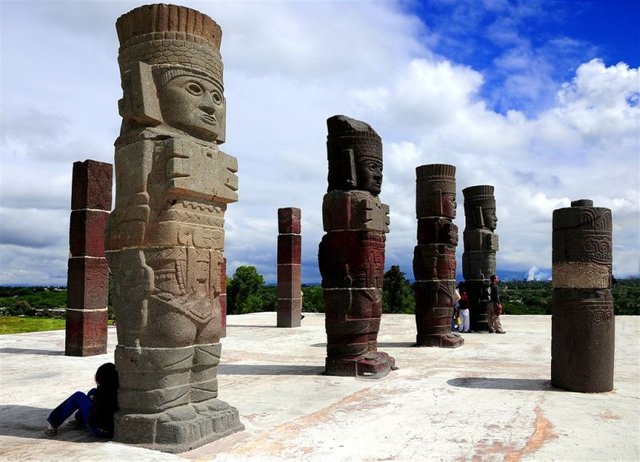
Toltec philosophy has become fashionable. Numerous groups of practice of the "Road of the Warrior" have emerged and various works have been published that aim to collect, explain and adapt the knowledge of the wise men of ancient Mexico. However, there is still much confusion about this matter, leaving the questions unanswered:
Who were the Toltecs and what is the Toltequity? In 1941 an unfortunate event occurred for the culture of Mexico. A group of archaeologists gathered to analyze the enigma of the Olmecs, came to the conclusion that the Toltecs were the inhabitants of the city of Tula, one of the capitals of Anawak between the 9th and 11th centuries of the Christian era.
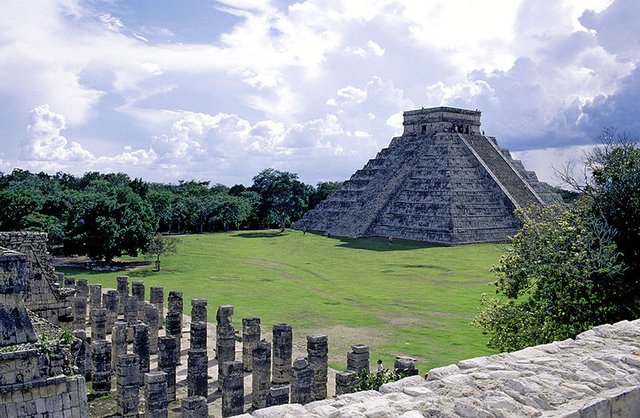
The archaeologists did not take into account that, according to the native sages interviewed by the Spanish chroniclers, the Toltequity was not exclusive of an ethnic group, but an inheritance shared by all Mexicans. Nor did they consider that the city we call today Tula, in ancient times had the name of Xicocotitla, and that the term nawatl Tula or Tollan is a title applicable to any capital. Currently this error has been overcome, mainly thanks to the work of four researchers:
The anthropologist Miguel León-Portilla, who rescued the Nawatl concept of Toltekayotl or Toltequity demonstrating that it was the name that the Mesoamericans gave to their cultural production and spiritual as a whole. - The archaeologist Laurette Sejourné, who showed that the Tula de los Mitos is the great city of Teotihuacan, developed between the 3rd century BC. C. to 8 d. C., and that all the people who adopted the cult of the Feathered Serpent were Toltec. - The historian Enrique Florescano, who has provided numerous proofs in favor of the previous thesis, showing that Tula Teotihuacan was not an ethnic capital, but a cosmopolitan city that functioned as a common embassy, since it represented the main peoples of Mesoamerica .- The anthropologist Carlos Castaneda, who calls "Toltecs" to their indigenous informants (belonging to various ethnicities of Mexico) and clarifies that, for them, be Toltec it is a category of shamanic knowledge.
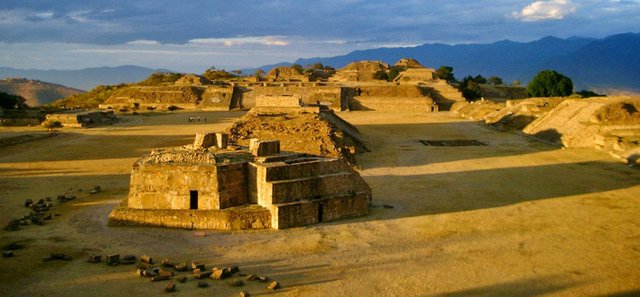
Toltequity characterizes ancient Mexico; It is your religion, your praxis, the essence of your being. All the towns of Anawak - Olmec, Mayan, Mexica, Zapotec, Mixtec, Totonac, Huichol - welcomed the teachings of the Toltec scholars. But we can go a step further, defining Toltequity as the common legacy of all the educated nations of native America. Anyone visiting Bolivia, Ecuador or Peru will notice the extraordinary similarities that exist between the civilizations of Anawak and Tawantisuyu. The Toltequity is as Mexican as it is Andean. Recognizing that common base is key to recover our deep identity as Americans, in order to present a true face and a united heart in the face of the challenge of the future.
Fundamentals of Toltequity In its Mexican version, Toltequity consisted of a set of ideas that explained the existence of the Universe, life and consciousness. The main ones were the following: The Universe was called Semanawak: surrounding unit or union of the diverse. It was considered that the physical world was a reflection of another world, invisible and energetic. This totality was divided into manifestation planes, which could also be understood as states of consciousness. There were five infernal or subconscious planes, and seven celestial or supraconscious ones, which converged on this earth, the place where we have the privilege to dwell. The energy received the name of Teotl, divine, since its nature transcended the reach of the senses. The Spaniards tried to translate that term as god, but, for the natives, Teotl was a qualifier that meant powerful, energetic.
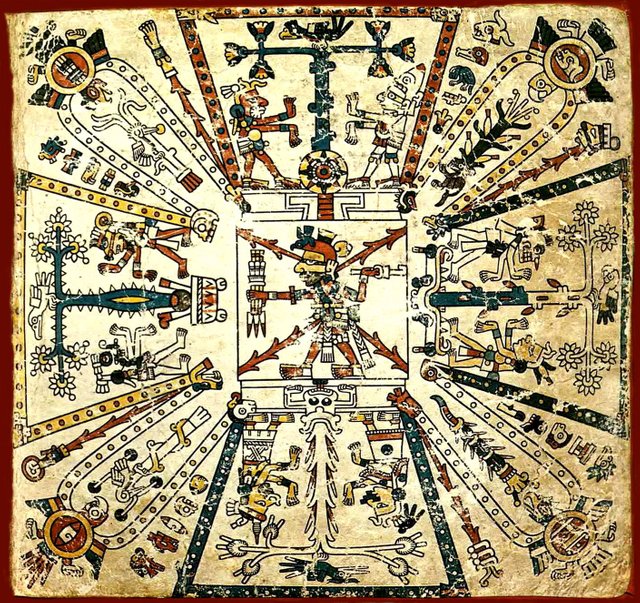
One of the most characteristic beliefs of the Toltecs was that all energy is polar. The positive pole was called Tonalli, obviously, and the negative Nawalli, hidden; Today we know them as ElTonal and El Nagual. These poles were not only ways to explain the movement of energy, but also faculties that we all possess and that we can empower. Our physical body with its instincts, emotions and thoughts, is our Tonal or particular window to the world, while the energy field that surrounds us and keeps us alive is our Nagual, a potential vehicle of transcendence.
The Mesoamericans believed that energy by itself is conscious; therefore, the Universe as a whole realizes, has an intention. The cosmic consciousness received the name of Centeotl, divine unity, a term that also means divine seed, since this being gives origin to all the others. We should not identify Centeotl with the god of Christians and Muslims; it was rather an abstract and impersonal entity, without human preferences or motivations. In order to create the world, Centeotl is transformed into Ometeotl. This title is composed of the terms Om, in unit, E, three, and the combination of both, Ome, two, plus the qualifier Teotl; so that it is translated divine uni-dual-trinity.
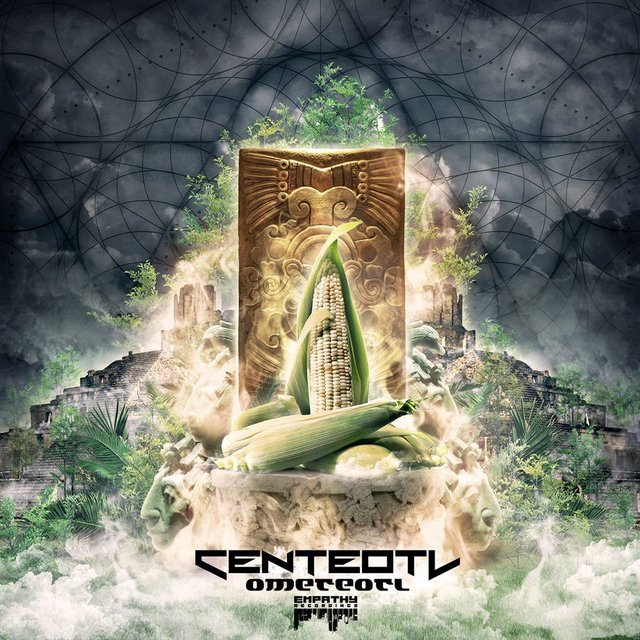
Ometeotl is the creator of spacetime; it manifests itself as a multitude of "gods" or mediating spirits, which in truth are personifications of the forces of Nature. Ometeotl represents the harmonization of polarities. He is the rector of evolution.
The Toltecs considered that every manifestation requires a process, and every process is cyclical and gradual. The Universe evolves from darkness to light, from matter to spirit, and for this, it is imperative that individual consciousness arise. As the Popol Vuh (Mayan Bible) relates, the gods in search of identity created different worlds and said: "There will be no glory in our work until the human being, the rational creature, emerges." That spark of consciousness focused on our mind and heart received the name of Ketsalkoatl, plumed serpent.
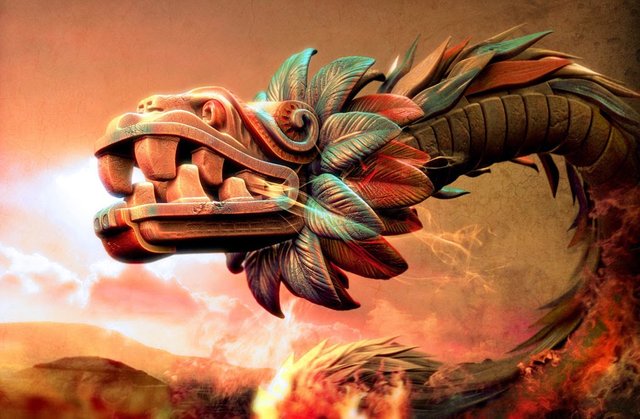
Ketsalkoatl is the personification of our consciousness potential. His name describes it: the serpent represents the physical body with its limitations, and the feathers to the conscience, with its aspiration to the supreme. The Plumed Serpent is, then, a metaphor for the process of ascension of the soul. In another reading, Ketsalkoatl was the name given by the Toltecs to their prophets, considered as people who came to a state of self-realization. The memory of several of these characters is preserved, the best known of them being Prince Akatl de Tula, who lived between 947 and 999 of the Christian era and left a brilliant spiritual heritage. In that society, when the child was born, the priest who received it made him know the purpose for which we have come to this earth, which is to increase the brightness of the conscience. Then he baptized it, passing over his head fire and water, he imposed a calendrical name and with it the child was transformed into a Masewalli or Macehual, deserved by the sacrifice of the Feathered Serpent. If the child honored that title with a productive and noble life, he came to consider himself properly as a Toltec or seeker of internal perfection. In order to guide the people, those sages recorded the experiences accumulated during generations in codices, murals and reliefs.
Shortly before the Christian era, the Elder Weman collected this tradition in a book he called Teomoshtli, a sacred book. The last known copy of that text was lost in the year 1746, but it was retains much of its content, which only expects to be translated. The Feathered Serpent and its messenger. Mayan Relief The practical side of Toltequity One of the most interesting, but least researched, aspects of Toltequity is what concerns practical formulas for driving and improving life. Few peoples of antiquity gave as much importance to the practical side of life, as the Toltecs. In fact, the experience was one of the essential principles of his faith, as we see in the following text of the Wewetla'tolli (a sacred mexica book):
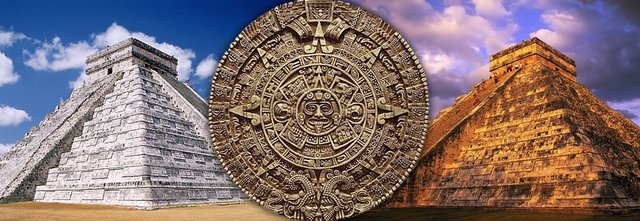
"Make you Toltec: men of your own experience." It is remarkable that the first dictionary of The Nawatl language, written by Father Molina in the mid-sixteenth century, translates the Toltekayotl term as art to live. This demonstrates the extent to which the ancient Mexicans were aware of having a unique cultural heritage, and how it was considered, above all, a practical matter. Such an emphasis on experimentation was because they saw the Cosmos as a living being, which moves and changes constantly. Consequently, they considered that the only way we can keep ourselves in tune with this being is by changing ourselves and opening ourselves to new experiences. As the researcher Víctor Sánchez affirms, the purpose of the Toltec religion was to reflect the movement of the Spirit: "It is convenient to note that, both for the Toltecs of antiquity and for the survivors of today, religion was not a set of guidelines of predetermined conduct, dogmas or the projection of personal importance, but a series of practices that had the objective of keeping man in contact with the Spirit. "(Víctor Sánchez, Toltecas del Nuevo Milenio).
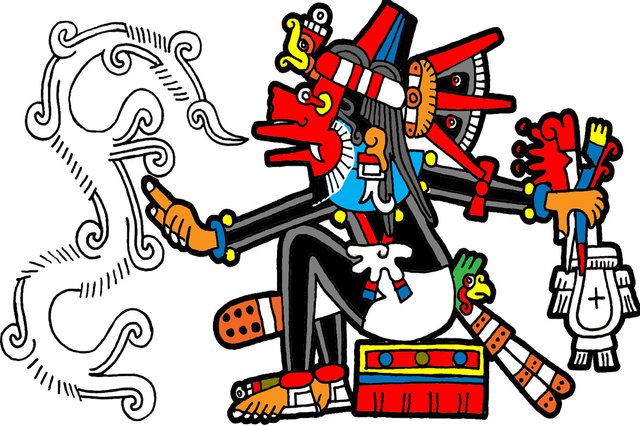
The concept of own experience is said in Nawatl with the term Yekoatl or Yeyekoa; significantly, that is also the name of the physical exercises. This shows that the advice to make us people of our own opinion is not limited to being open to the information that comes from abroad, but it implies advancing us, conveying the experience, causing results - in a word: we commit ourselves intimately to the search of knowledge. The vestiges preserved in the stones and other testimonies of the past show that the ancient Mexicans paid great attention
Hi @ormas, firstly, I am sorry I came a bit late on your post as I am pretty overwhelmed with my professional responsibilities.
Secondly, when I read and comment on a blog, I do it with my full attention and put my heart and soul into it.
Thirdly, when a post showcases concepts that I am not familiar with but still important enough to attenuate some of my ignorance and boost my understanding of humanity, I pause and challenge my own comprehension abilities.
Having said that , I was trying to comprehend the "KINAM Method" that your title mentions. You mention the term only once in the title, so not knowing what it actually meant, I googled it and found that except a guy named Kinam Park (http://www.kinam.com/) the only other mention of the term is this article itself.
So basically I will be restless all day until I discover this Kinam Method. LOL
So please put my restlessness to rest.
Cheers :)
hahah its just the name they give lol
Kinam method. from Mexico will be referred by its old name, Anawak, and by the name given by Mesoamerica researchers: . The diverse Mesoamerican cultures will be included under the generic title of Toltequicity
hahaha i also google it and i found some yoga therapy loool called Kinam
Thank you for sharing this. I really enjoyed reading this. After reading it I see a lot of similarities between what you are describing here and eastern philosophy and religion. I hope that more people will begin to practice this and evolve this way of living and being to fit their current circumstances. The picture of the feathered serpent is spectacular.
thx so much for taking your time in reading
you will get nice curation reward and 100% upvote
looking forward to see you again in the blog
No problem, it was my pleasure. I love this post because it has the potential to add back into the world knowledge that otherwise might have been lost. There are many people who have come before us and they ran into some of the same problems and had some of the same questions that we still have today.
These people have come up with answers to some of these questions and the more you study their philosophy, our philosophy, and the philosophies of many other cultures--the more you realize that we are all humans and we have a lot in common. I think what appealed to me when I read this is that immediately you feel a connection to it.
You feel this connection because the efforts and the struggles of those who develop this philosophy shine through and you did a great job of explaining it. As much as I feel connected to it and I see the similarity between this and other philosophies your post also does a great job of highlighting the pitfalls of trying to fit this philosophy into your own way see things--the way the Spanish scholars did. This post feels familiar while still illustrating a sense of diversity and uniqueness.
yeah i am a Spanish living in Mexico hehe
thx so much i am so glad from your words
you are totally right about it !!
i have a deep connection with this culture all around nature
and its really simple how things work by the way of nature
Haha sorry, I meant the Spanish scholars that you were talking about in your post!
The text of this posts is an extract from “The Kinam Method: A Tolteca Teaching“ (El Método Kinam, una enseñanza tolteca, Ed. CEACM 2007) a book written by Frank Diaz. It is a shame that the author of this blog it doesnt mention the name of the author of the text, and even seems to be earning money with this post. It is really a great shame and also a fraud.
http://diazfrank.blogspot.com/p/libros-publicados.html
EL MÉTODO KINAM,
una enseñanza tolteca
Frank Diaz
Título: El Método Kinam
® Frank Díaz [email protected]
® Kinames S.A. de C.V. www.kinames.com
Primera edición, 2007
ISBN: 978-968-9379-0111.jpg
“i have a deep connection with this culture“???? You are a FAKE.
“The Kinam Method: A Tolteca Teaching“ (El Método Kinam, una enseñanza tolteca, Ed. CEACM 2007) is a book written by Frank Diaz. It is a shame that the author of this blog it doesnt mention the name of the author of the text, and even seems to be earning money with this post. It is really a great shame and also a fraud.
http://diazfrank.blogspot.com/p/libros-publicados.html
Inter-dimensional beings thank you for your great post.
thx so much for your comment !!
This post has received gratitude of 2.50 % from @appreciator thanks to: @ormus.
thx so much for your support !!
The text of this posts is an extract from “The Kinam Method: A Tolteca Teaching“ (El Método Kinam, una enseñanza tolteca, Ed. CEACM 2007) a book written by Frank Diaz. It is a shame that the author of this blog it doesnt mention the name of the author of the text, and even seems to be earning money with this post. It is really a great shame and also a fraud.
http://diazfrank.blogspot.com/p/libros-publicados.html
EL MÉTODO KINAM,
una enseñanza tolteca
Frank Diaz
Título: El Método Kinam
® Frank Díaz [email protected]
® Kinames S.A. de C.V. www.kinames.com
Primera edición, 2007
ISBN: 978-968-9379-01
You got a 8.27% upvote from @postpromoter courtesy of @ormus!
thx so much for your support !!
you always have the best content
thx so much for your support !!
The text of this posts is an extract from “The Kinam Method: A Tolteca Teaching“ (El Método Kinam, una enseñanza tolteca, Ed. CEACM 2007) a book written by Frank Diaz. It is a shame that the author of this blog it doesnt mention the name of the author of the text, and even seems to be earning money with this post. It is really a great shame and also a fraud.
http://diazfrank.blogspot.com/p/libros-publicados.html
EL MÉTODO KINAM,
una enseñanza tolteca
Frank Diaz
Título: El Método Kinam
® Frank Díaz [email protected]
® Kinames S.A. de C.V. www.kinames.com
Primera edición, 2007
ISBN: 978-968-9379-01
You got a 1.68% upvote from @upme requested by: @ormus.
Send at least 1.5 SBD to @upme with a post link in the memo field to receive upvote next round.
To support our activity, please vote for my master @suggeelson, as a STEEM Witness
thx so much for your support !!
Great job on this post. I now want to learn more about this.
thx so much i will keep posting info about it
This post has received a 7.93 % upvote from @booster thanks to: @ormus.
thx so much for your support !!
THIS IS A FRAUD. The text of this posts is an extract from “The Kinam Method: A Tolteca Teaching“ (El Método Kinam, una enseñanza tolteca, Ed. CEACM 2007) a book written by Frank Diaz. It is a shame that the author of this blog it doesnt mention the name of the author of the text, and even seems to be earning money with this post. It is really a great shame and also a fraud.
http://diazfrank.blogspot.com/p/libros-publicados.html
EL MÉTODO KINAM,
una enseñanza tolteca
Frank Diaz
Título: El Método Kinam
® Frank Díaz [email protected]
® Kinames S.A. de C.V. www.kinames.com
Primera edición, 2007
ISBN: 978-968-9379-01
Great post👍
thx so much i am glad you like it !!
You are most welcome 😊 stay happy 😊
THIS IS A FRAUD. The text of this posts is an extract from “The Kinam Method: A Tolteca Teaching“ (El Método Kinam, una enseñanza tolteca, Ed. CEACM 2007) a book written by Frank Diaz. It is a shame that the author of this blog it doesnt mention the name of the author of the text, and even seems to be earning money with this post. It is really a great shame and also a fraud.
http://diazfrank.blogspot.com/p/libros-publicados.html
EL MÉTODO KINAM,
una enseñanza tolteca
Frank Diaz
Título: El Método Kinam
® Frank Díaz [email protected]
® Kinames S.A. de C.V. www.kinames.com
Primera edición, 2007
ISBN: 978-968-9379-01